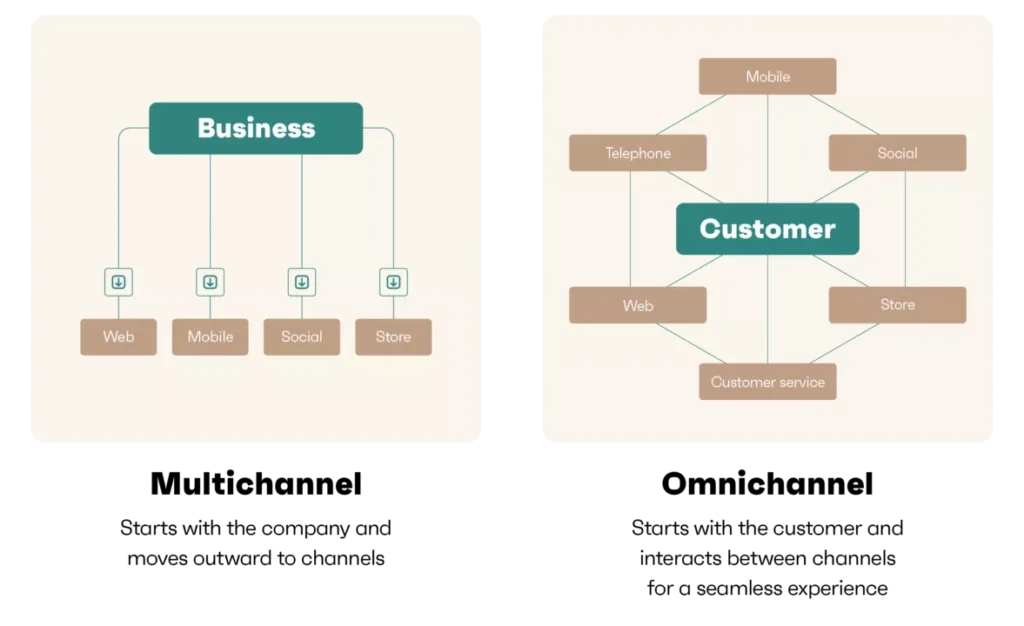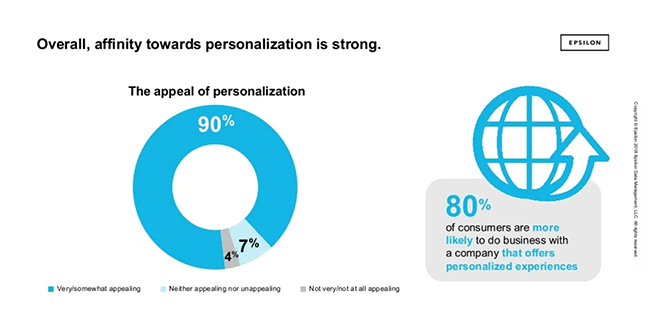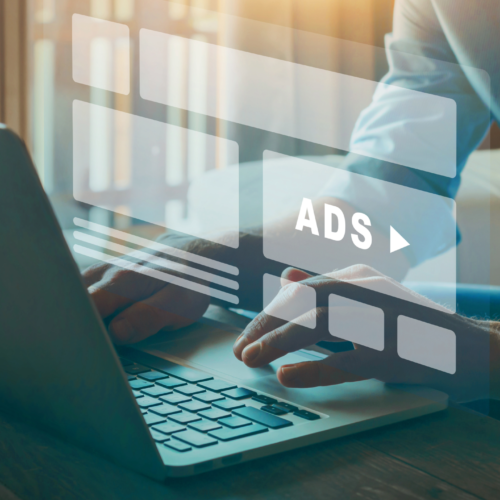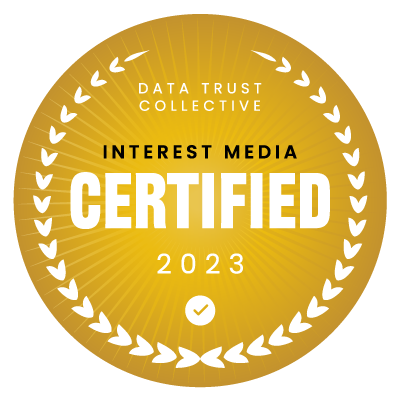
What an Omnichannel Marketing Strategy Can Do for Your Business
- Omnichannel marketing is the practice of interacting with your customers through whichever channels they prefer: in-store, email, text, on the web, social media, or in-app.
- An Omnichannel marketing strategy creates a consistent shopping experience across touchpoints, achieving effectiveness through visibility, measurement, personalization, optimization, and automation.
- Omnichannel marketing is a customer-centric approach that encompasses customer experience, context, content, and collaboration. Interest Media specializes in providing omnichannel marketing solutions.
What is Omnichannel Marketing?
“90 percent of consumers move between devices when making a purchase” – Google.
Omnichannel marketing refers to all the ways a brand or company might connect with the customer or consumer.
The prefix “Omni” means all and “channel” references the various physical and digital spaces where a customer might interact with a company or brand. For example: physical stores, a website, email, SMS (text messaging), push or in-app notifications, newsletters, television, social media, and more.
Omnichannel marketing also refers to reaching customers as they move across different screens such as mobile, tablet, television, and desktop.
In summary, the essential components of an omnichannel marketing strategy include:
- Consistent messaging across all marketing channels.
- Customer-centric marketing that reflects the interactions of the audience with any channel.
- Personalization across all channels at every stage of the buyer journey.
- A reliance on data, analytics, and automation.
How does omnichannel marketing differ from multichannel marketing?
Although the terms omnichannel and multichannel marketing may sound like the same thing, they are different approaches.
The characteristics of multichannel marketing
Multichannel marketing refers to a strategy that uses multiple channels to communicate with customers to sell products and services. It is characterized by what might be deemed as a “wide net” approach. It involves trying a wide variety of marketing channels to see what customers you can catch. Multichannel marketing messages are not necessarily highly targeted or personalized, although some can be.
Multichannel marketing can involve digital, traditional, and other channels.
For example, digital could be websites, email, and social media. Traditional could include newspaper ads and billboards. Other channels might include television advertising, direct mail, or mail-order catalogs.
The characteristics of omnichannel marketing
Omnichannel marketing differs from multichannel marketing in two ways:
- Omnichannel marketing uses a very segmented and targeted approach. It may focus on a particular customer segment within the buyer’s journey. Omnichannel marketing uses data to inform its targeting and deliver personalization to a chosen segment or individual consumer.
- Omnichannel marketing also follows a customer across various devices and platforms to deliver personalized messaging in the right context at the right time.
The 4 “C’s” of Omnichannel Marketing
The 4 “C’s” of omnichannel marketing stand for: customer experience, context, content, and collaboration. Let’s take a look at how each one of these contributes to your omnichannel marketing strategy.
Customer experience:
“Using three channels instead of one for a marketing campaign results in a 287% higher purchase rate.” – Omnisend
Omnichannel marketing is a customer-centric approach. Simply, it’s a strategy that puts the customer first. The aim is to give your valued customer a seamless and personalized journey across all of the various touchpoints. The focus is on ensuring an engaging and positive experience for the customer.
To do this, it’s important to understand the customer’s needs, pain points, and desires.
For example, a customer looks at something on your website. They login to your app and they receive a reminder of where they left off. Or they might receive a text notification giving them more information on the last thing they looked at.
Omnichannel marketing relies on powerful data to create a personalized experience.
Context:
The best description of context is sending the right message to the right customer at the right time, and through the right channel. It’s a matter of knowing a customer’s problem and needs and anticipating future needs.
For example, a customer may have recently purchased a particular product. Let’s say that product might need a refill after a certain number of days. A message in context sends that customer a reminder that their supply might be getting low and encourages them to purchase a refill.
Content:
Content is about sending the message the customer needs at the right time – and not sending the messages they don’t need or want.
Doing this right requires a knowledge of your customer’s journey and where they are presently. This allows you to understand what they already know and what they need to know. What they need and what they don’t.
Sending the right content engages your customers and leaves them wanting more. This can span the gamut from informative articles and videos, to captivating and/or interactive social media posts or videos, personalized emails, and more. Your content goals should range from the objectives of informing, helping, entertaining, and inspiring.
Collaboration:
Collaboration starts first between the members of your in-house team. From sales to marketing to customer service – input from all groups is important in collecting data. These departments also need to work in harmony.
If you work with outside teams, your in-house team needs to work with your outside groups. After all, these outside agencies are relying on your in-house people to provide the best information possible.
The next stage of collaboration could be with influencers and content creators on social media. Not only does this type of arrangement require collaboration, but sometimes a pair of additional C’s: Cooperation and confidence. Social media content creators and influencers know their audience. You have to have the confidence that these people know what they’re doing. Why else would they have huge followings? You may have to cooperate and be willing to bend a little to stretch out of your comfort zone. That doesn’t mean that you should give these collaborators carte blanche to do whatever they want. But you don’t want to box them in so tightly that they can’t do what they do that has made them successful. Their audience will see straight through something that is too corporate or sales-y.
The 5 “Pillars” of Omnichannel Marketing
The 5 “pillars” of omnichannel marketing stand for: visibility, measurement, personalization, optimization, and automation. Let’s take a look at how each one of these contributes to your omnichannel marketing strategy.
Visibility:
Visibility means making your marketing campaigns visible to the customer as they move between channels and screens.
Reaching these consumers requires a fully integrated tech stack. A combination of marketing automation, a retargeting platform, and CRM all work together and with other solutions to achieve a singular customer view.
To achieve visibility marketers need to be armed with the right set of tools to make their campaigns visible throughout the entire customer journey. Companies such as Interest Media specialize in providing omnichannel solutions. Reach out to our team of experts using the form below.
Measurement:
Once you achieve visibility, the next crucial step is measuring your cross-channel performance. After all, you can’t gauge your omnichannel marketing efforts without an accurate measurement at each customer touch point.
Effective measurement answers key questions about what components are working such as campaigns, landing pages, offers, retargeting ads, and more. They can provide valuable insight into what influences prospects to purchase.
It can also help you focus your efforts where they are needed most. It can show you where your customer interacts most such as through mobile, on tablet, or laptop.
Measuring your results identifies where you are providing personalized customer experiences and where you are failing to connect.
Personalization:
“89% of businesses are investing in personalization this year” – Forrester
Personalization is considered one of the highest priorities of marketing currently and in the future. And it’s not because businesses feel that way – it’s what customers are demanding.
“72% of users said personalization is highly important” –Capco survey
Consumer demand is forcing businesses to look for ways to use data as a way of delivering a seamless omnichannel one-to-one customer experience in real-time.
Marketers require real-time personalization tools that can provide predictive analytics, social media analytics, CRM, marketing automation, and more.
There is a hefty requirement for first-party and third-party data that can be analyzed online and offline from potential customers.
Companies such as Interest Media specialize in personalized, omnichannel solutions. They extract first-party data from over 25 million active consumers each month. Their tools allow brands to connect with the precise customer segments they’re looking for. Reach out to our team of experts using the form below.
Optimization:
“Companies with strong omnichannel customer engagement will see a 9.5% rise in annual revenue” –Customer Think
Accurate measurement provides the pathway to optimizing an omnichannel marketing strategy. And nailing personalization is only half the battle.
Here is where you combine marketing strategy and budget to deliver optimal results.
Identify what channels consumers are interacting with most that lead to a purchase. You also want to identify those on the threshold, consumers who are clearly demonstrating buyer intent.
Interest Media specializes in utilizing first-party data and consumer insights to attract high-value who show a clear connection to your brand. Interest Media can help you create meaningful interactions with actively engaged audiences that have confirmed their intent and fit your precise customer profile. These authenticated customers have been pre-qualified and are ready to engage with your brand. In other words, these are consumers who are attempting to engage with a particular good or service. Interest Media can help you target consumers at the time when these buyers are most likely to purchase.
This optimized approach to marketing can help you be far more effective with your campaign allocations. When you optimize your marketing with effective insight into both online and offline data, you’ll be able to make smarter decisions.
Automation:
“92% of businesses are using AI to power their personalization strategy” – Segment
Personalization and robust analytics are difficult to achieve without automation. The right tools can turn such detailed work into a routine task. Automation is a key factor in being able to deliver personalization at scale. Artificial intelligence (AI) is playing a major role in improving the capabilities of automation tools.
However, what automation can achieve for you is only as good as the data you are feeding it. Third-party data alone won’t do. What’s crucial is the availability of first-party data, ideally directly from, or about your target audience.
Interest Media has acquired precise first-party data and consumer insights. The company also owns and operates web properties that boast over 100 million fully registered consumers. Interest Media has a wealth of data it can leverage to provide data-driven results.
What Can an Omnichannel Marketing Strategy Do for Your Business or Brand?
“Consumers shopping across multiple channels have a 30% higher lifetime value.” – Think with Google
Both the customer and brand benefit from an omnichannel marketing strategy. Here’s a look at what each might expect to receive:
Omnichannel benefits for customers:
- Customer-centric marketing messages.
- Relevant messages in the right context at the right time.
- Personalization that considers a customer’s needs, wants, browsing history, and purchase history.
- Messages consistent across devices and platforms.
- Loyalty programs, rewards, and special articles tailored to the customer.
- Ability to interact with the company or brand.
Omnichannel benefits for companies:
“Customers who visit your site or brand across multiple devices spend an average of 3 to 4 times more than customers who only interact with a single channel” – SAS
- Place a focus on your brand, not the channel.
- Purchases can occur on more than a single device.
- Integration of in-store and online shopping.
- Increased brand recognition.
- Improved customer loyalty.
- Improved customer retention.
- Increased sales through retargeting customers.
- Determine your most successful channels and build customer relationships through them.
- Ability to optimize campaigns and maximize budget allocation.
- Determine poorly performing channels and adjust accordingly.
- Better understand your customer journeys.
- Determine the best areas of focus for your team’s time and energy.
Looking for an Omnichannel Marketing Solutions Provider?
Interest Media offers a complete omnichannel solution. Deliver your marketing messages across email, display, push, SMS, and more.
With specialized tools that are built for performance, Interest Media delivers thousands of exclusive offers, derived from the internet’s most valuable consumer verticals, to publishers seeking increased earnings.
Interest Media offers a consumer-centric advertising solution that utilizes first-party data combined with real-time optimization that maintains a positive user experience while driving higher earnings.














